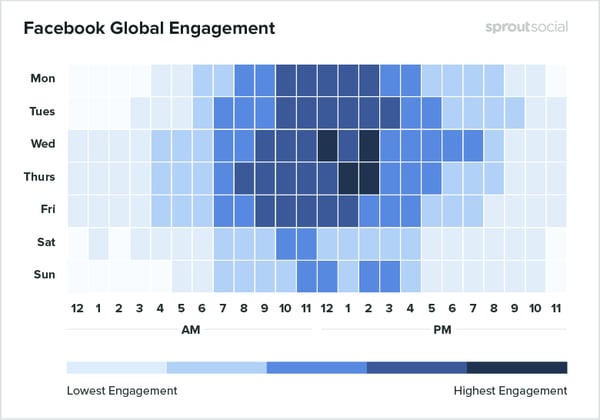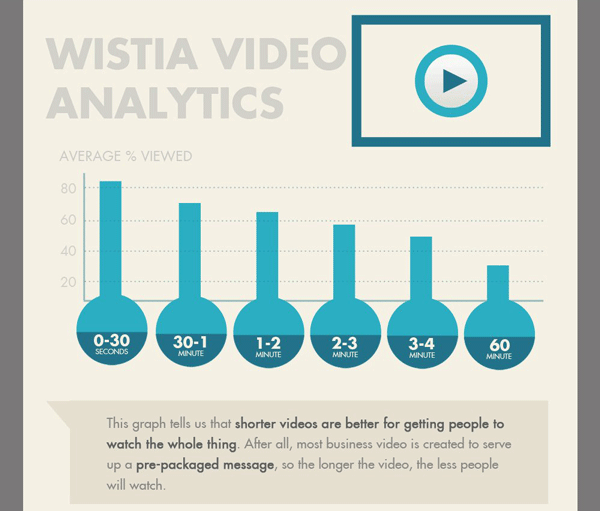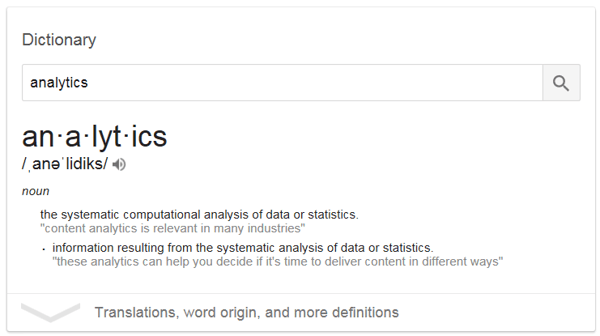
If you have a business and don’t have a social media presence yet, you are likely missing out. Your ability to engage prospects and grow your business in today’s digital world will hinge on your ability to be found by your prospects wherever they are looking.
According to a recent Social Media Examiner study, 97% of small businesses use social media to attract new customers. Those numbers make it sound like everyone is using it, until you also learn that 85% of business owners aren’t sure which social media platform they should be using.
It’s hard to be effective when you aren’t even sure if you’re using the right platform.
Seniors (65+) are utilizing social media in growing numbers, and growing your business will be much easier if you can effectively leverage social media to engage your audience.
In this article we will talk about what to consider when developing a general social strategy as well as pointers on creating relevant content and connecting with seniors on Facebook. We will also link to detailed information on how to create ads and post on the different social platforms.
The information on this article will be expanded and updated over time, so check back with us every now and then to see what's new.
We look forward to hearing about your experience.


Embarking on online marketing, especially within the insurance sector, calls for a keen understanding of the regulatory landscape. Before launching any promotional activities, verify that your marketing efforts align with the relevant legal standards.
Success in digital marketing is not a product of chance; it's the result of strategic planning. Random posts on social media platforms won't cut it. That said, crafting a successful strategy need not be a complex affair.
Setting a clear objective, such as committing to publish at least one original piece of content weekly to educate your clients and prospects, is crucial. Ensure your efforts are directed towards meeting this target, and hold yourself accountable.
In the realm of content, quality invariably outweighs quantity. It's essential to maintain the relevance of your information. Prospects follow you or subscribe to your newsletters because your previous articles struck a chord with them—they anticipate more of the same.
Observing your industry peers can provide valuable insights. Many share news, resources, original write-ups, videos, and more. There's no need to start from scratch; instead, tailor these ideas to reflect your unique perspective.
Preemptively address your prospects' queries
As an insurance agent, you're already attuned to what your prospects seek, the hurdles they encounter, and the knowledge they need to progress.
Draft a list of potential questions from your clientele and tackle each one through detailed articles. Invest the time to craft pieces that are not only informative but also engaging and straightforward. Initially, simplicity is key, but always aim to meet your established objective.
Remember, social marketing is not a sprint—it's a marathon. Every article you publish adds to a repository of knowledge that will steadily enrich and support your prospective clients. Avoid rushing the process at the expense of the quality and integrity of your service.
 Understand that just because you have a social page doesn’t mean you will suddenly get a rush of followers, leads or customers.
Understand that just because you have a social page doesn’t mean you will suddenly get a rush of followers, leads or customers.
You should treat a social platform simply as a means of communication used to build a relationship with an audience.
You can start building that relationship with your potential customers by providing information they are looking for, related to senior insurance.
You will let them find you by providing breadcrumbs of information that they find interesting or relevant.

By adopting this approach, you position yourself as an invaluable resource for your clients. Craft your content to cater specifically to your niche, making every interaction resonate deeply with your audience. Letting your focus drift into irrelevance will likely lead your followers to look elsewhere for insight.
Engage with your audience on a personal level. Steer clear of sounding robotic or overly formal. Simplify complex information into digestible pieces, and engage in a tone that's easy and conversational, helping your audience to grasp concepts more comfortably.
Leverage the visually driven nature of Facebook to your advantage. Thoughtful use of imagery not only enhances your posts but also drives higher engagement, making your content more compelling and shareable.
 Within the 65 and better demographic Facebook is the most used platform. According to Pew, 62 percent of internet users ages 65 and older use Facebook, and 72 percent of 50 to 64-year-olds use Facebook.
Within the 65 and better demographic Facebook is the most used platform. According to Pew, 62 percent of internet users ages 65 and older use Facebook, and 72 percent of 50 to 64-year-olds use Facebook.
If you’re looking to connect with seniors, then engaging them on Facebook should be a part of your marketing puzzle. The senior audience is also growing on Twitter, just not with the same numbers as Facebook.
Feel free to explore different platforms and see what works for you. Facebook just happens to be the most prominent platform for the senior demographic at this time, so that is where we will place our focus.
[ See Facebook Advertising for Insurance Agents for a deeper dive in to Facebook Ads. ]
I encourage you to read through this article before moving to the Facebook Ad specific blog.
There are several ideas on the best times during the day to post on Facebook. Don’t get too caught up in trying to time it perfectly, just be aware of the busier times.
The heat map below from Sprout Social is a good general look at the times that could lead to the best engagement.

 If you are just starting off writing and sharing content on Facebook, You may want to start with short, summarized content.
If you are just starting off writing and sharing content on Facebook, You may want to start with short, summarized content.
Keep things short and to the point and be sure to add images that support the narrative as Facebook is very image friendly.
Articles can be written on a blog or website and shared as a link within Facebook. A click on the link in Facebook will drive traffic to your website where it matters most.
When visitors are taken to your article, they should have an option to either subscribe to a blog, or some other “offer” in exchange for their contact info.
Get creative. If you have a short message, reminder or quote, you can add it to an image for more impact. There are many tools that can help you with this. Canva (https://www.canva.com/) is a great example of a simple application for this.
Many images on Canva are free, some at a low cost. There are plenty of templates and fonts to choose from. You don’t need to be a designer with an app like Canva, just pick a style template and add text. You can then download your image, ready to post on Facebook.
There are other similar software applications, this is just one that I use quite a bit.
Why so serious?
Remember to share more than just work related articles. It’s important to keep it light on your Facebook page. Show your personality by sharing information not directly related to your business. People want to know who they are doing business with.
Bear in mind, the common theme of your posts should be aligned in some way. They should all be pieces of a larger picture that describes who you are. And that picture should show a picture of someone your audience wants to do business with.
Share images, memes or other posts that are somehow relevant and reflect your brand without always sounding like you’re selling something. Don’t be afraid to get personal on Facebook.
Be sure to use imagery that supports your content. Your articles will have a theme, so make sure the images you use echo that in some way. Again, stay relevant and stick to your story.
Offer free, quality content that drives prospects to a landing page where you can then collect email addresses. Once a prospect shows the interest by giving you their contact information, you can then send them additional relevant content, solidifying yourself as a valuable resource.

 Even though we are focusing on Facebook as the preferred platform, it would be a mistake not to include video in the discussion. Video has quickly become the preferred way to consume information.
Even though we are focusing on Facebook as the preferred platform, it would be a mistake not to include video in the discussion. Video has quickly become the preferred way to consume information.
80% of viewers remember a video ad they’ve seen in the last 30 days. Video is memorable, influential, and continues to gain steam, especially among seniors - 54% of seniors watch videos online, and three in four seniors have taken action because of watching online video.
Videos are great for engagement and shares. Videos that have more than 30 seconds per view will get an additional boost from Facebook. Short videos are fine, but keep them at least 30 seconds long in order to take advantage of the Facebook 30 second boost.

https://mediacdn.disqus.com/uploads/mediaembed/images/267/9790/original.jpg
Also note, the average percentage of video viewed is highest with shorter videos. If your goal is to get your entire video seen, keep it short and to the point. However, this doesn’t mean you shouldn't also make longer videos.
If there is important information that you know people are looking for, make the video the length that is required to do the subject justice. Charts like the one above provide good insight, but you know your customers best.
Add value by answering popular questions seniors may have. For example, make a 2-3 minute video giving tips and helping them understand the ins and outs of Medicare. This can be the same information you wrote about in your blog, only in a different form.
You can upload your video direct to your YouTube channel, if you have one, as well as to your Facebook page, making use of both channels. Your videos should be captioned as Facebook videos are more often viewed without sound.
If you have a YouTube channel, remember to use the space in the description of the video on YouTube to link to your Facebook page, blog posts, or social media links. Link all of your content to each other so you can be found on several channels.
If your video showcases a product or service you offer, this is your opportunity to link to a website landing page or blog with similar information where they could subscribe to your blog or newsletter.
If you don’t want to go the YouTube route, no worries. You can still create videos and upload them directly in Facebook or on your website. The point is, video is a big part of social media and will only help your reach.

Measure your results and adjust appropriately. Try different subjects, lengths, and forms of content. Learn what gets the best response from your audience and keep fine tuning for success.
Facebook offers some tools to help analyze your ad campaign. Clicking into a campaign will show the performance of each ad in your campaign in more detail.

Remember to keep your main goal in mind when analyzing the information.
If you're trying to get leads from a form on a web page, then don't get caught up in how many likes the campaign may have generated.
If you're trying to build followers then review the appropriate information to see how many followers were gained. It's easy to get bogged down with information that doesn't really matter.
If you're not satisfied with a campaign, try a different ad and continue to analyze until you narrow down what resonates with your audience.
[ See Facebook Advertising for Insurance Agents for a deeper dive in to Facebook Ads. ]
We tried to narrow it down to the most important points to provide you with a good overview of marketing with social media.
Technology is always changing, and you will need to stay informed on those changes moving forward. We will continue to provide helpful information to help make the process easier.
We hope you will branch out and test the waters with other platforms like Twitter, and LinkedIn to broadcast your message and build your brand.
We wish you the best of luck. We will continue to share our insights in upcoming articles.
©2024 Precision Senior Marketing | 11940 Jollyville Rd #200 South, Austin TX 78759 | Phone: (800) 998-7715
*“Not affiliated with the U. S. government or federal Medicare program. This website is designed to provide general information on Insurance products, including Annuities. It is not, however, intended to provide specific legal or tax advice and cannot be used to avoid tax penalties or to promote, market, or recommend any tax plan or arrangement. Please note that PSMBrokerage, its affiliated companies, and their representatives and employees do not give legal or tax advice. Encourage your clients to consult their tax advisor or attorney.